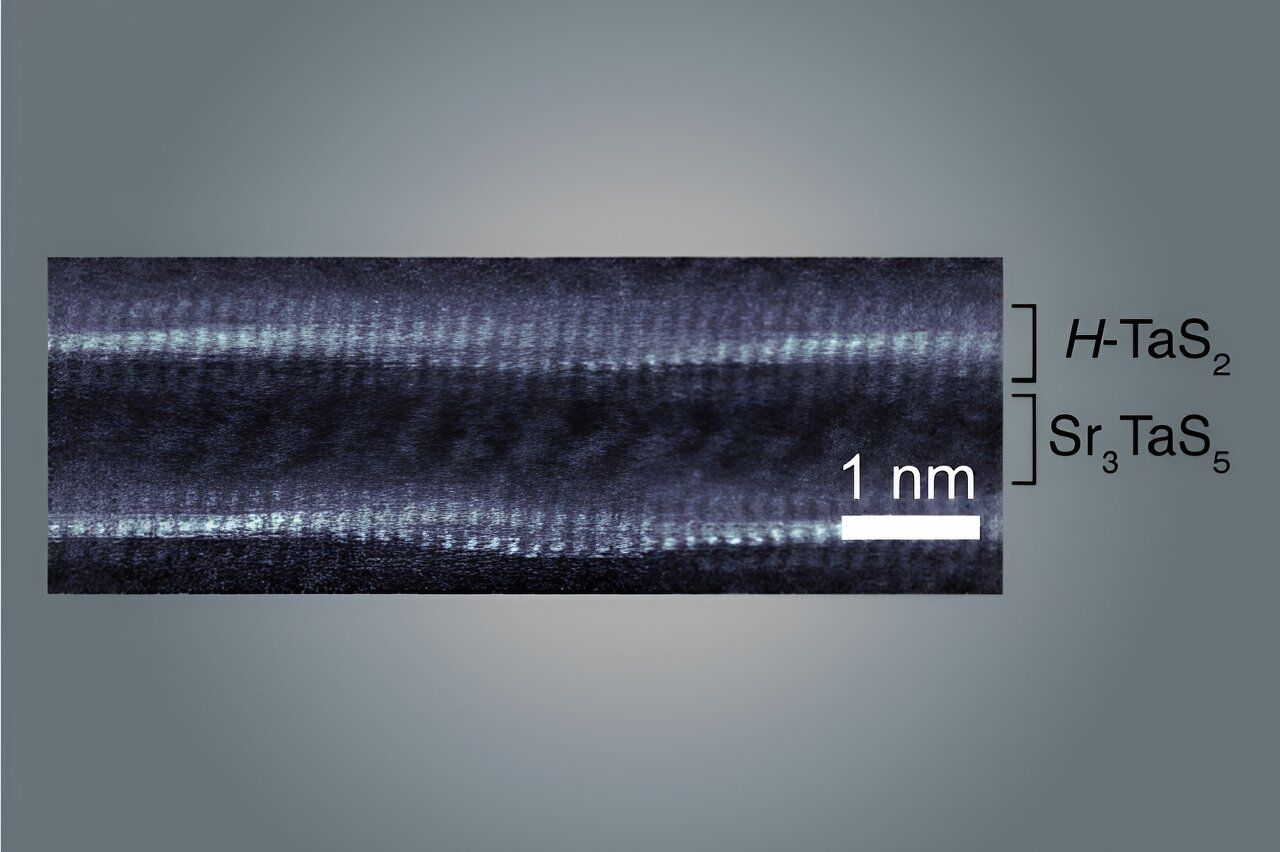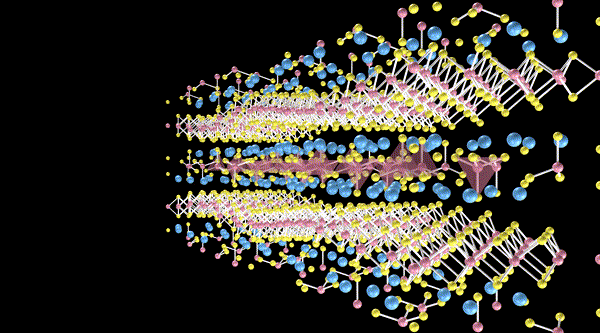Follow us on Google News (click on ☆)
Researchers at MIT have created this material from layers of atoms, measuring just a few billionths of a meter. Thanks to their wavy structure, quantum phenomena can be observed in a more accessible way.

Transmission electron micrograph of a material with wavy atomic layers.
Credit: Checkelsky Lab, MIT
One of this research's major breakthroughs is the rational fabrication of the material. By understanding how atoms interact, the researchers can create materials with new properties. The result is a crystal made of thousands of perfectly wavy atomic layers.
So-called two-dimensional materials, made up of one or a few layers of atoms, are gaining increasing attention from physicists. By modifying the structure of these layers, it becomes possible to elicit phenomena like superconductivity. However, the small size of these materials makes them difficult to study.
The MIT team found a solution by creating crystals via simple chemical reactions. They heat powders in a furnace to obtain stacked layers of tantalum, sulfur, and strontium atoms. The waves formed between the layers are due to differences in atom size. These wavy layers alter the material's properties.
These waves influence how electrons move through the material. In the hollow regions, electrons flow more easily, making superconductivity stronger in certain parts. The material's metallic properties are also modified: electrons prefer to move in one direction rather than another.

Animation showing the atomic structure of a new material composed of wavy atomic layers.
Credit: Paul Neves, MIT
This material opens new avenues for numerous applications in advanced technologies. Researchers have thus discovered a family of materials with as-yet unexplored properties.
What is superconductivity?
Superconductivity is a physical phenomenon where certain materials can conduct electricity with no resistance when cooled below a critical temperature, usually very cold. This means that electric current flows with no energy loss, unlike in conventional materials such as copper.
This phenomenon has numerous applications. For example, superconductors are used in the powerful magnets of MRI scanners or in magnetic levitation trains. The goal of research is to discover superconductors that work at less cold temperatures, enabling even broader applications.